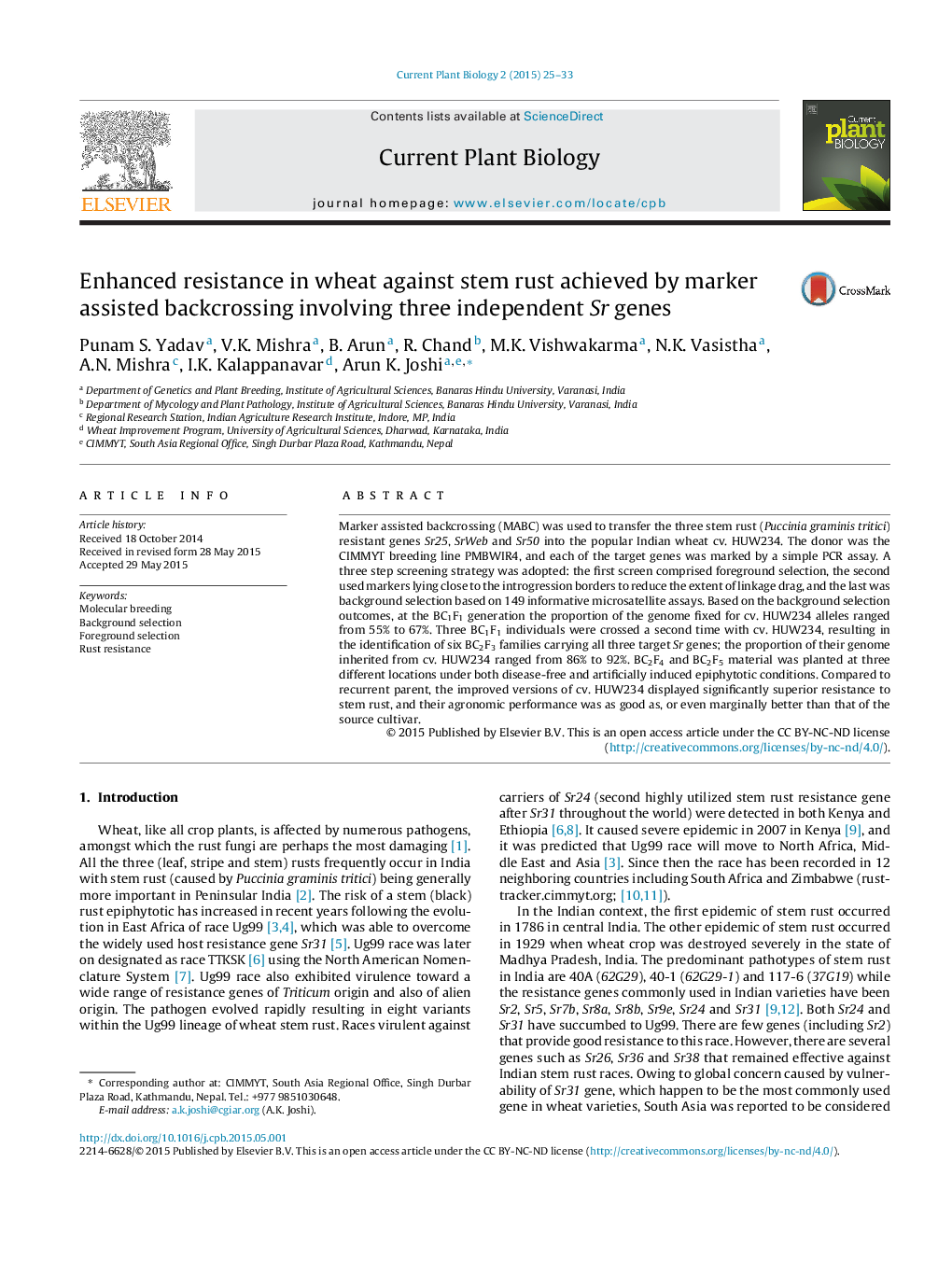| Article ID | Journal | Published Year | Pages | File Type |
|---|---|---|---|---|
| 571829 | Current Plant Biology | 2015 | 9 Pages |
Abstract
Marker assisted backcrossing (MABC) was used to transfer the three stem rust (Puccinia graminis tritici) resistant genes Sr25, SrWeb and Sr50 into the popular Indian wheat cv. HUW234. The donor was the CIMMYT breeding line PMBWIR4, and each of the target genes was marked by a simple PCR assay. A three step screening strategy was adopted: the first screen comprised foreground selection, the second used markers lying close to the introgression borders to reduce the extent of linkage drag, and the last was background selection based on 149 informative microsatellite assays. Based on the background selection outcomes, at the BC1F1 generation the proportion of the genome fixed for cv. HUW234 alleles ranged from 55% to 67%. Three BC1F1 individuals were crossed a second time with cv. HUW234, resulting in the identification of six BC2F3 families carrying all three target Sr genes; the proportion of their genome inherited from cv. HUW234 ranged from 86% to 92%. BC2F4 and BC2F5 material was planted at three different locations under both disease-free and artificially induced epiphytotic conditions. Compared to recurrent parent, the improved versions of cv. HUW234 displayed significantly superior resistance to stem rust, and their agronomic performance was as good as, or even marginally better than that of the source cultivar.
Related Topics
Physical Sciences and Engineering
Chemical Engineering
Bioengineering
Authors
Punam S. Yadav, V.K. Mishra, B. Arun, R. Chand, M.K. Vishwakarma, N.K. Vasistha, A.N. Mishra, I.K. Kalappanavar, Arun K. Joshi,
